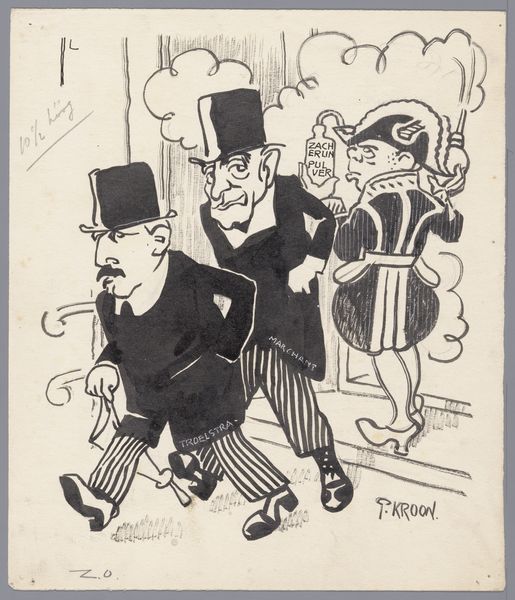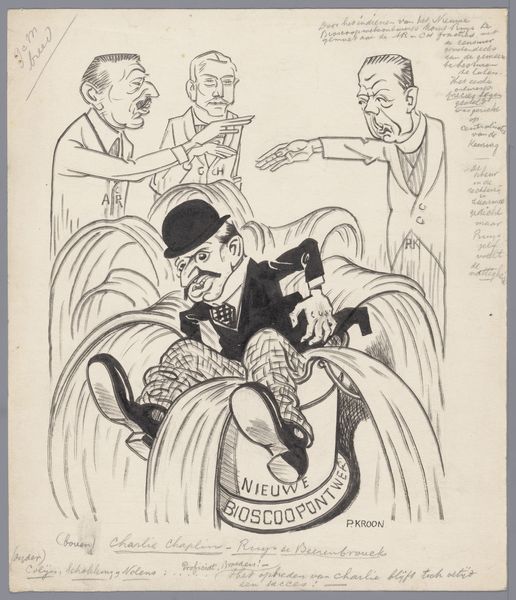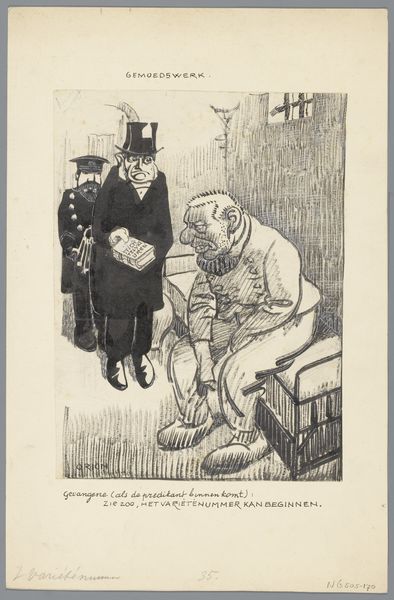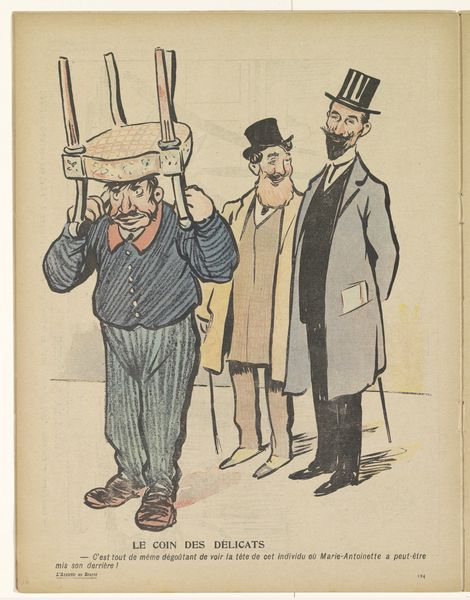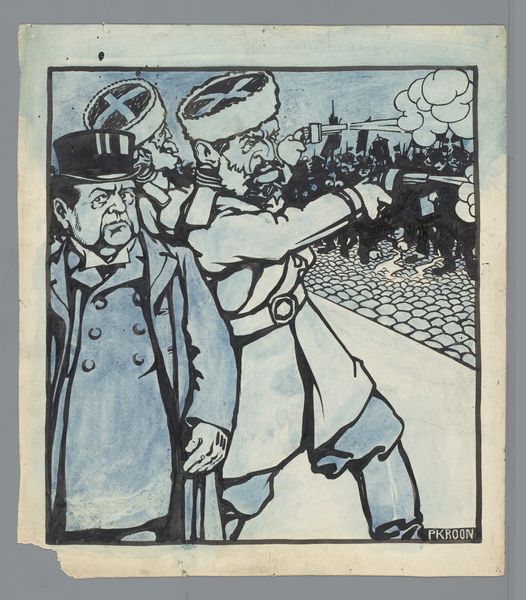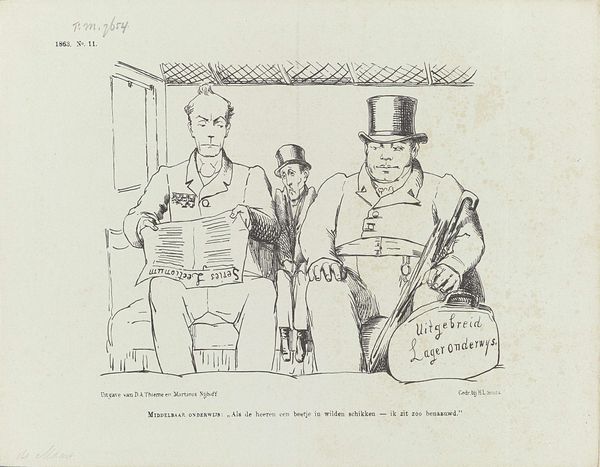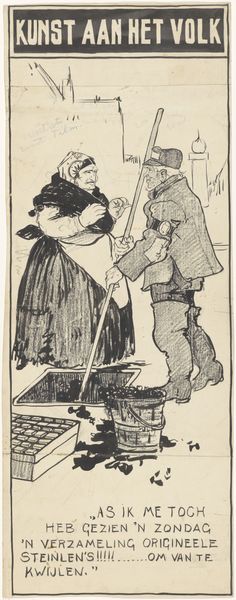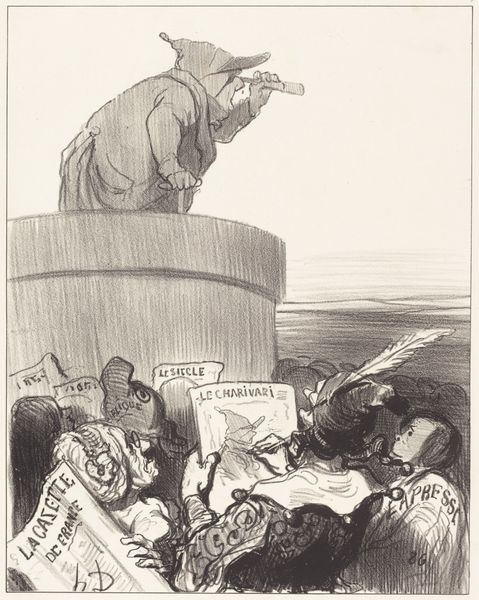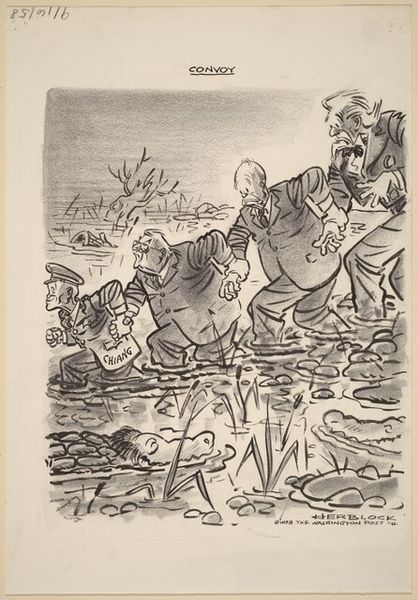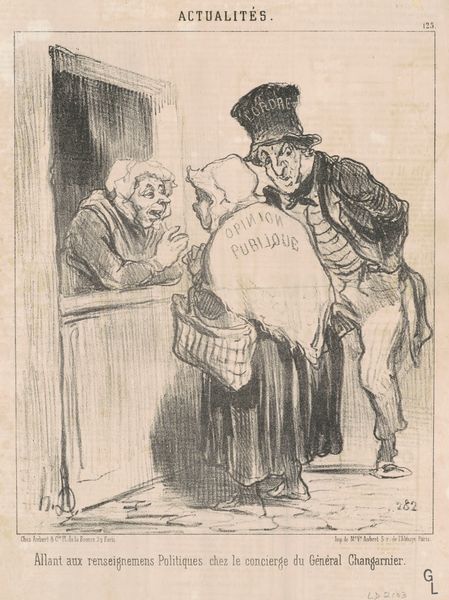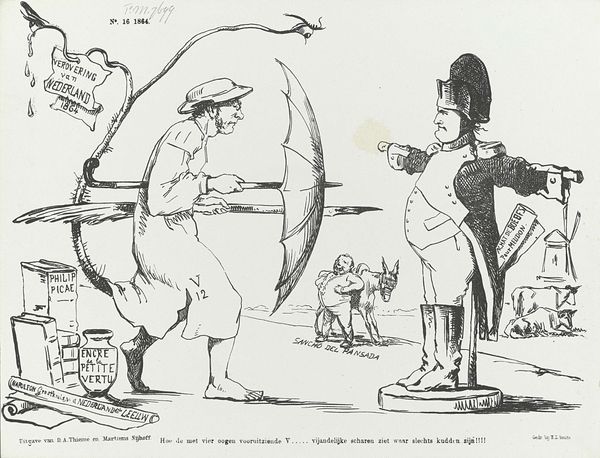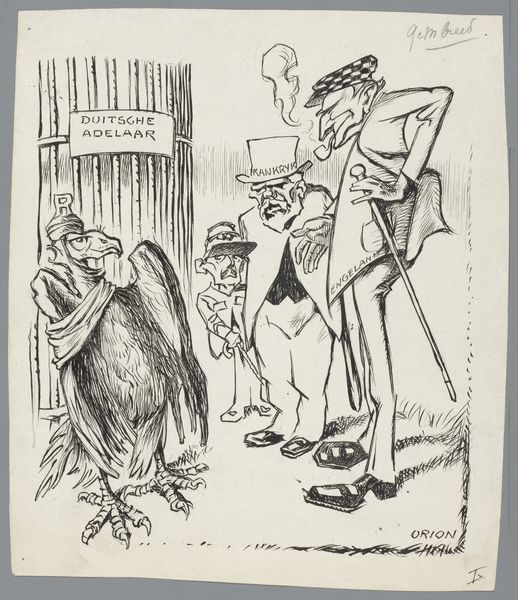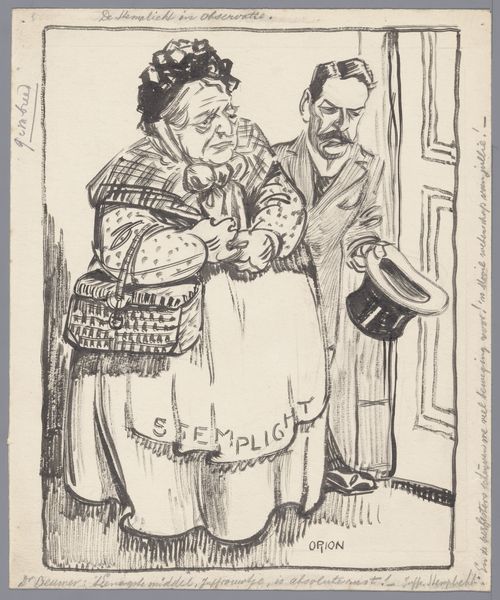
drawing, ink, pen
#
drawing
#
narrative-art
#
caricature
#
junji ito style
#
cartoon sketch
#
personal sketchbook
#
ink
#
illustrative and welcoming imagery
#
ink drawing experimentation
#
pen-ink sketch
#
sketchbook drawing
#
pen
#
cartoon style
#
sketchbook art
#
graphic novel art
#
modernism
Dimensions: height 250 mm, width 235 mm
Copyright: Rijks Museum: Open Domain
Curator: Let’s explore "Politiek volgt het pijpen van het Kapitaal," a pen and ink drawing created sometime between 1900 and 1935 by Patricq Kroon. Editor: My initial impression is biting satire. The line work is sharp, creating a stark and somewhat grotesque caricature. The imagery evokes unsettling societal imbalance. Curator: Exactly. Kroon's piece is a clear visual statement about the relationship between political power and capital. We must look at the socio-political climate of the early 20th century to understand it properly. Think of the rise of industrial capitalism and its pervasive influence. Editor: It’s there in the craftsmanship, isn’t it? The use of drawing emphasizes accessibility—think political cartoons in newspapers, immediate and reproducible. Look at the artist using fairly simple materials. Curator: Precisely. The portly figure at the front, adorned with "Kapitaal," smokes a pipe, dictating terms. Notice how the figures behind, labeled "Politiek," "Economie," seem subservient, almost puppets. This reveals critical perspectives of power dynamics. Editor: It highlights a hierarchy reinforced through material production and visual representation. I would want to explore if it speaks to particular labour practices. I see themes about how certain industries may enable corruption in the name of money and industrial production. Curator: Absolutely. And considering that "Kapitaal" wears a hat that reads “reactie”, we must explore conservative backlash. There is historical commentary present regarding those who use money to reverse policies to stay in power. Editor: Kroon cleverly utilized accessible media to broadcast and consolidate political views to wider audiences at that time. The means by which it’s conveyed is as telling as its explicit critique. Curator: Looking through today’s lenses, it still holds incredible power in how it communicates social criticism by bringing intersectional factors such as economic status, social status, and access to power into dialogue with contemporary ideas and questions. Editor: The cartoon may have successfully captured these dynamics of labour and influence on policy. What a revealing piece when analyzed within its historical framework!
Comments
No comments
Be the first to comment and join the conversation on the ultimate creative platform.
